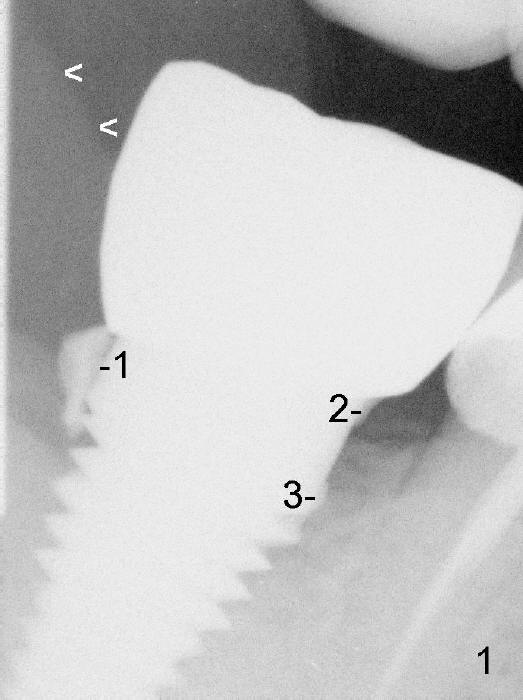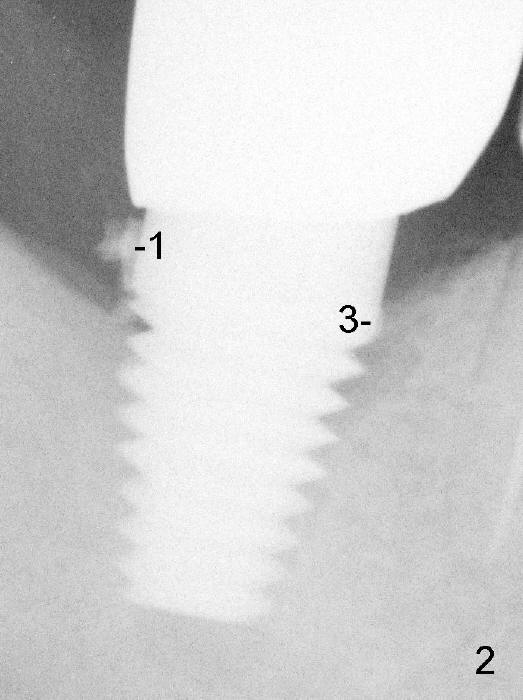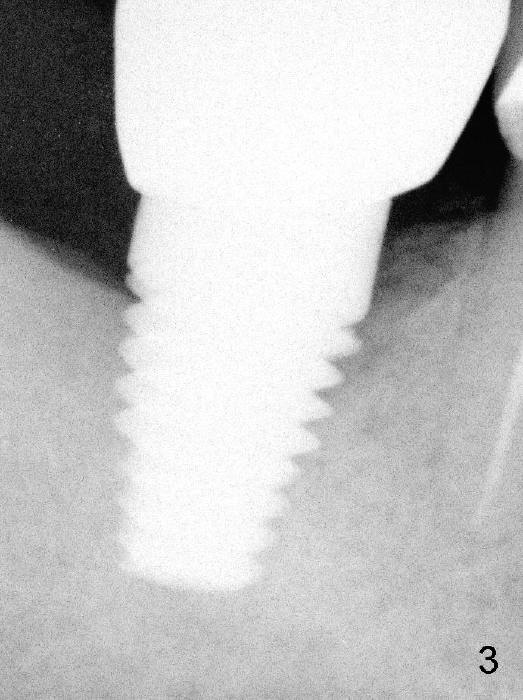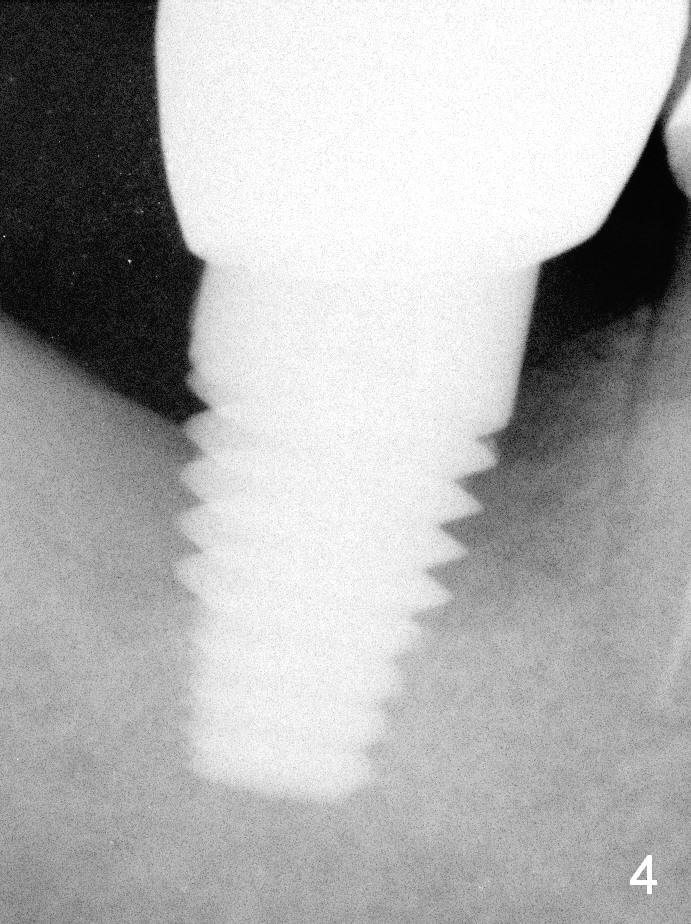



 |
 |
 |
 |
Cement Retention Associated with Lower 2nd Molar Implant
Four months post implantation, a Zirconia crown is cemented with Temp Bond. Two months later, the patient returns for recall. Bitewing shows 3 pieces of residual cement (Fig.1: #1,2,3) . Due to the thick distal gingiva (Fig.1 <), initial effort results in partial removal of the distal cement (Fig.2 (PA): #1). The shallow cement in the mesial aspect is apparently removed, whereas the deep one remains untouched (Fig.2: #3). Further removal is done before discharge without X-ray confirmation.
Seven months later, the patient returns for prophy. An explorer and a thin Cavitron tip are used repeatedly to remove small amount of residual cement from the deep portion of the distal sulcus, followed by copious irrigation with Hydrogen Peroxide and Chlorhexidine. PA is taken to show none of the residual cement (Fig.3).
It appears that Temp Bond is more likely to be retained underneath an implant crown than a permanent cement. Temp bond may be retained when it is used to cement a provisional crown. Therefore make a tightly fit provisional and use as little cement as possible. When the provisonal is removed, thoroughly remove the cement, particularly distally. Before final cementation, study the margin of the crown against die carefully. Posterior crown margin should be supragingival as often as possible.
Two years after residual cement removal, bone loss deteriorates with repeated swelling (Fig.4). It appears that cement retention is the effect, but not the cause of bone loss. When bone does not form around the most coronal implant threads, the gingiva does not attach to the implant surface so that the gingival seal is incomplete. Only after bone deposits on the implant thread surface does the gingiva forms a good seal. However, cement to be used should not be excessive. The residual cement should be removed as much as possible.
Return to Lower Molar Immediate Implant,
Periimplantitis
Xin Wei, DDS, PhD, MS 1st edition 12/08/2014, last revision 03/04/2018